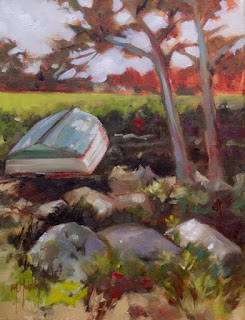Hurricane Evacuation
Yesterday, I quickly packed to evacuate my island home and run from Hurricane Matthew. Hurricanes are scary. I grabbed a stack of art books to pass the time as I sit in my comfortable hotel room in Orlando while the storm passes.Painting the Elements
So my best hurricane book is "Painting the Elements" by Kelly Messerly. She encourages us to analyze weak design and fix a bad painting. There are basics -- color, contrast, composition, and design, as well as sunlight, shadows. And very useful for me today is the chapter on clouds, mist, rain...So how do you paint a hurricane?
- Use great design and color.
- Understand how to paint.
- Most of all, live it.
Living the Hurricane
While I can't really go out to paint plein air during the hurricane, I'm watching the swath of destruction on TV. I'm sketching while viewing through the window how the palms are blowing sideways (even in Orlando we're experiencing hurricane force winds).I'm actively worried about how my house and gallery are faring. I'm eating too many snacks. I'm feeling this storm. It's personally affecting me to my very bones. Totally a way to create a meaningful "worried" point of view on canvas. I can't even think straight enough to paint, but I'm sketching and I'll eventually take the sketches to create paintings of dark, moody, and scary.
Stay dry!
--Mary Hubley
















































